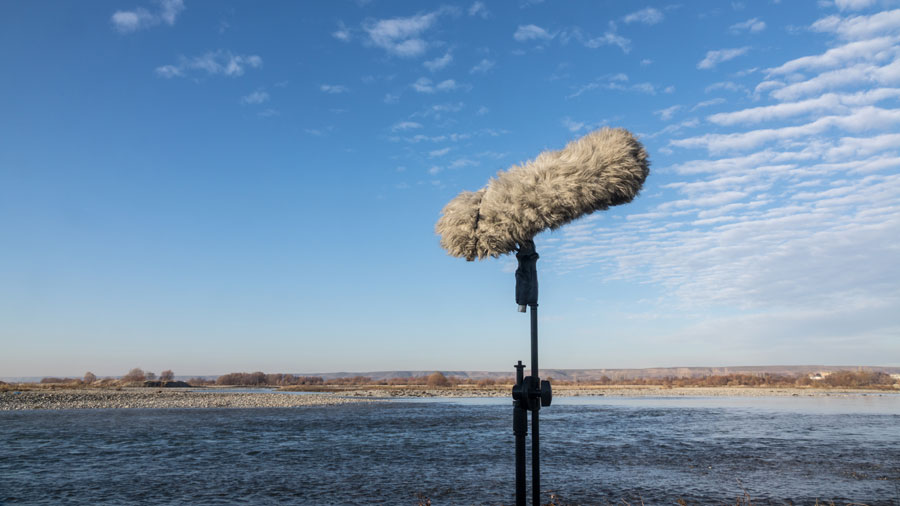What are Windscreens?
Capturing professional audio outdoors can be very tricky and requires not only the right knowledge, but the right tools to help you get the job done. Outdoor audio capture will almost always see the utilization of some sort of wind protection for your microphones. There are many factors at play, and these can include the actual environment (nature of the airflow/wind flow), the type of microphone being used and its characteristics, and what the sound engineers/viewers would deem acceptable for use. Outdoor conditions are ultimately very unpredictable, so it’s best to be prepared for these types of situations.
There are 3 basic types of wind protection for microphones:
- Foam windscreens
- Windsocks / windjammers
- Baskets / “blimps”
These products are needed to help prevent wind noise from ruining your important audio. Even in harsh environments or poor weather, footage still needs to be captured and wind protection for your microphone is the best way to combat unintelligible audio. Any high-end visuals caught with the best cameras on the market will be almost unwatchable if the sound is bad.
The Science of Wind Noise
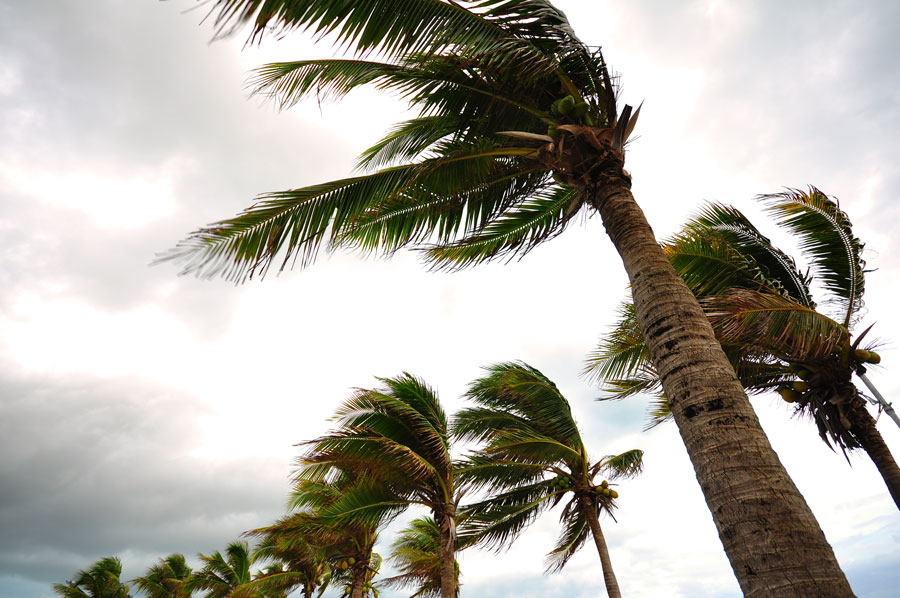
Wind noise can be a nightmare to anyone recording audio outdoors. The noise would sound to most like a bass-heavy, low rumbling, “thumping” or “fwapping” in your video’s audio track. This would typically happen in the sub-500 Hz range of the audio frequency spectrum. Since the fundamental frequencies of the human voice typically lie between 85 Hz – 265 Hz, dialogue can be directly affected by wind noise and potentially could be made completely unintelligible and unusable.
What an audio person or camera operator wants is some sort of noise attenuation (noise reduction). Wind noise and its attenuation are typically measure in dB (decibels). This attenuation can be achieved with some sort of porous and/or wispy barrier (foam, plastic mesh, fabric, or faux-fur in various combinations) to create a “chamber” of sorts, with the microphone capsule suspended and protected in the middle. These materials make up much of what we see available today to protect your audio from the forces of nature.
Any time a pressure change occurs, air will move from a high-pressure area to a low-pressure area. In an indoor setting, small air pressure changes like a slight draft from a door opening/closing, or a forced-air heating/cooling system, etc., are the most common occurrences. Even quickly moving a boom pole with a mic attached to it can cause a similar effect.
Capturing pro audio indoors is much less of a challenge than outdoors. Outdoors, pressure change can be much more drastic in nature, thus causing much more severe wind. The most effective microphone wind protection must first diffuse the wind and normalize the air pressure near the mic capsule, essentially deadening the air disturbance all around the microphone. With a bare microphone barrel, air can easily flow over the microphone’s outer case, causing disturbance in the immediate vicinity of the microphone capsule. But, adding the protective barrier of a windscreen will diffuse wind around the mic capsule, forcing air to move out and around the foam, while still allowing sound waves to penetrate the material.
Various wind protection products have different acoustic properties, with differing acoustic transparencies. The acoustic transparency of any particular windscreen cover will have a greater or lesser effect on the audio, depending on the material. A less porous material made of a thicker, denser fabric, would show an attenuation of sound at higher frequencies. A more porous and less dense fabric would have a lesser effect on high frequencies (therefore more transparent), but would be more vulnerable to noise created by wind.
There is always a trade-off between the acoustic transparency and the wind-blocking capability of a windscreen cover. The bigger the dead-air “chamber” created around the mic capsule, the better. So basically, the more protective material you put around the microphone, the more adjustments you may have to make to achieve the desired sound.
Types of Microphone Wind Protection
Foam Windscreens
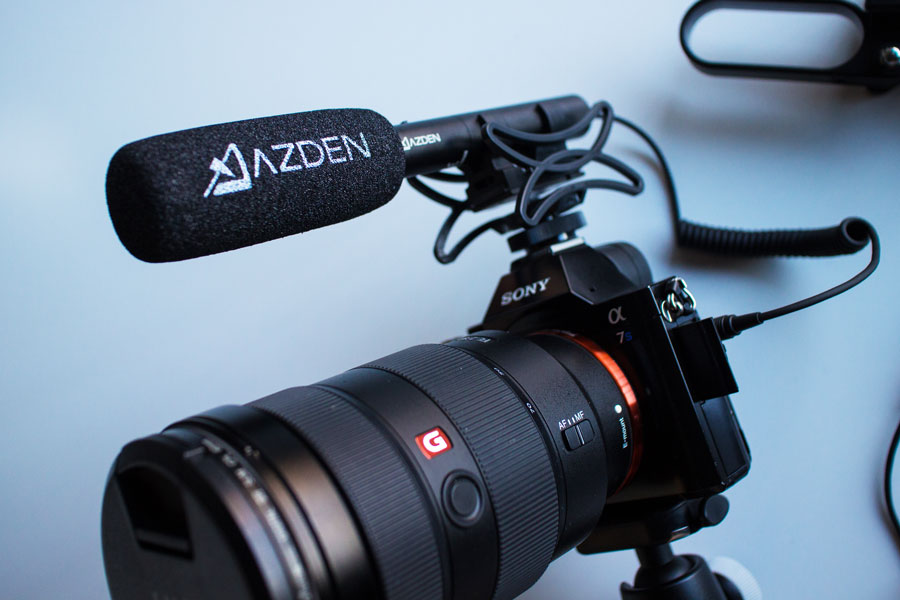
Most beginner videographers/sound-recordists know that many microphones are supplied with a typical foam windscreen but may not know when or when not to use it, or when to upgrade their setup to better protect their audio.
These foam-type windscreens are fine for indoor use, as air movement indoors is typically less than 1 meter per second. Something like the Azden WS-250, that comes with the SGM-250 or SGM-250P microphone, is perfectly suited for indoor use. This will provide plenty of noise protection, with up to 15-20 dB of noise attenuation, while keeping the mic’s high frequency loss to a minimum.
Usually, these types of foam windscreens are an open-cell foam material like polyurethane. For outdoor use and microphones mounted to ENG/EFP-type cameras, you may want to invest in a higher density foam material that’s even better at wind reduction than the included foam windscreen.
Windjammers
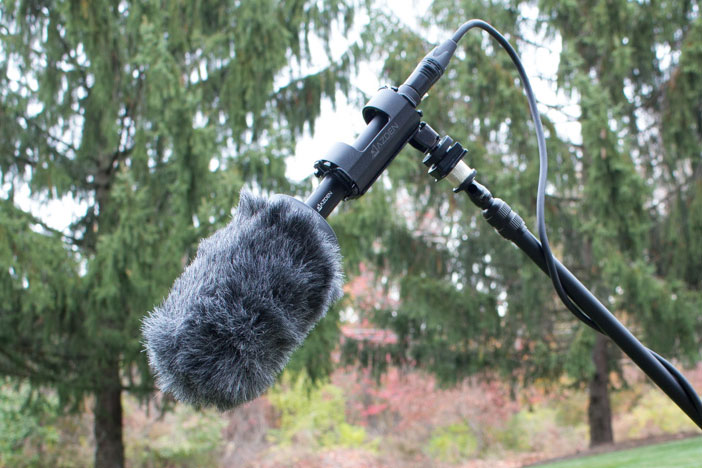
The foam/faux-fur combination windscreens are typically referred to as “windjammers.” A synthetic flocked “fur” material is attached to the outer part of a polyurethane foam windscreen to better disperse air movement around the microphone capsule. A perfect example of these types of windscreens are the Azden SWS-100 and SWS-200 furry windscreens. A longer fur material (typically 1-1 ½” or more in length) is desired, as it creates less air friction near the mic capsule, allowing air to move through it.
A very short material, by contrast, would have less of a noise reduction effect, since there would be more air friction closer to the mic capsule. With little resistance, the longer fur allows air to freely pass through and over the microphone’s capsule, thus providing an extra layer of noise protection without sacrificing much the microphone’s high frequency response. This style will typically provide upwards of 25 dB in wind noise reduction with winds up to 6 meters per second. Sometimes, a windjammer is designed to slip directly over a microphone’s included foam windscreen, just like the Azden SWS-CX windshield that protects the Azden SGM-250CX microphone.
Baskets/Blimps
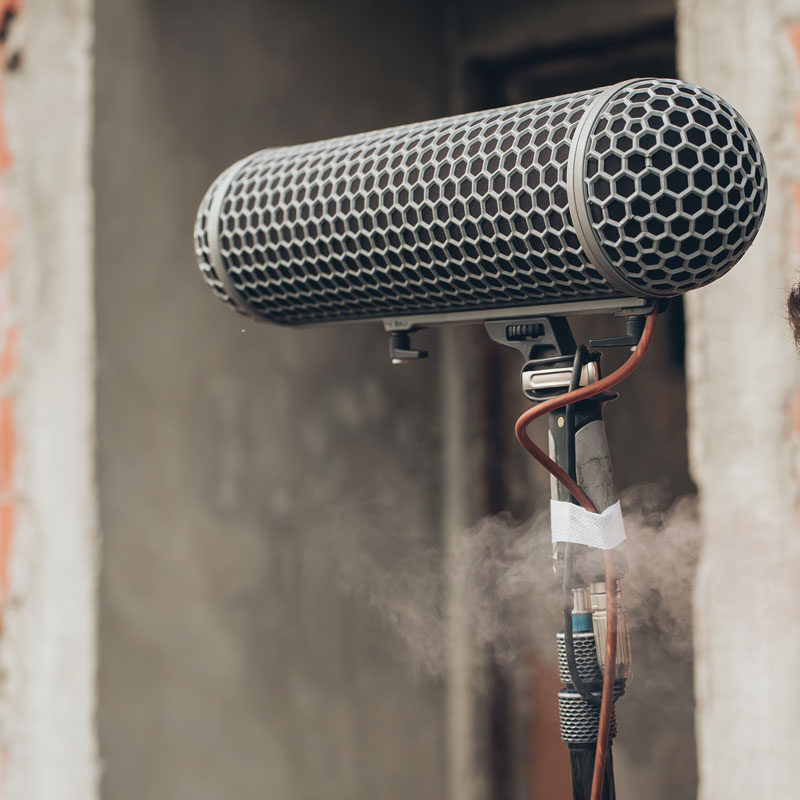
Lastly, “baskets” or “blimps” are essentially some sort of plastic mesh material, with a thin layer of foam inside the mesh. These will have a much larger circumference than the typical foam windscreen or “windjammer” one might see, and usually come in a “pill” shape, but much larger in size. Thus, the nickname of a “blimp” is easily justified.
Blimps provide a larger open-air chamber around the microphone, creating even more space between the moving air and the mic’s capsule. Using a blimp with an additional faux-fur slip-on windshield will add the last level of wind protection, and with these measures in place, one can achieve up to 50 dB of wind noise reduction with wind speeds more than 6 meters per second. However, with the large static air chamber, foam layer and faux-fur material surrounding the mic, there’s a greater potential for loss of high-frequencies in your recording. Boosting the high frequencies in post-production is one way to help counteract this effect.
To Wrap It up
At a minimum, a microphone should always have a foam windscreen on it, but for any type of shoot outdoors, the camera operator or sound professional must be aware of their surroundings and choose the protection they deem necessary. Environment plays a large role in choosing the proper wind protection, but with preparation and making sure you choose high-quality products from reputable companies, capturing professional audio to match your professional video will be less daunting and make all your post-production work much easier. To paraphrase an industry adage: great sound quality can save bad footage, but great footage will never save bad sound quality.

